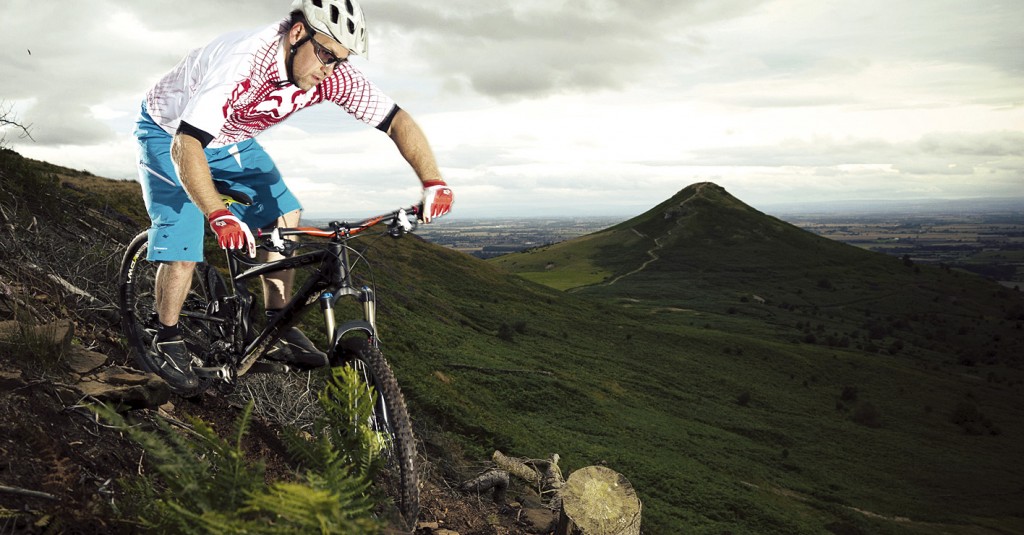Cube Stereo Race: a year in review
This is our review of the 2011 Cube Stereo Race. Our 2013 Cube Stereo longtermer starts here.
 After putting Cube’s Stereo through its paces over the past 12 months, mbr’s Mick Kirkman delivers his final verdict…
After putting Cube’s Stereo through its paces over the past 12 months, mbr’s Mick Kirkman delivers his final verdict…
Time flies, and it’s hard to believe it’s been a year since I trundled down to our Croydon HQ to pick up my long-termer — the Cube Stereo Race. It was a bike I’d singled out after riding various 2010 trail bikes on test at mbr, and immediately connected with the solidity and low centre of gravity.
In the flesh, first impressions were good. I wasn’t totally sold on the looks, but you couldn’t argue with the overall package for the money: XTR rear mech, XT cranks, 150/120mm Fox 32 Talas FIT fork were all indications that I had a good year’s testing ahead of me. I was very excited.
Once things were changed as required — wider bars, short stem, flat pedals — the Cube soon became a trusty companion, taking me to places far and wide with little complaint, and also proved perfectly suited to my ‘zero-maintenance’ policy.
The Stereo’s geometry is bang on the money for a bike of this nature; not so slack that you can’t get out and pedal it around a long cross-country loop, but with a decent overall length for stability at speed, and plenty of room to move about in the cockpit. The bottom bracket height is something I’ve mentioned many times — I love the fact that it makes cornering so much fun, but others might feel the pedals are precariously close to the ground. The ProPedal lever goes some way to solving this by letting the bike sit up more, but turning it on does reduce traction on rougher climbs, so it’s a compromise.
Out on the trail, frame stiffness and solidity is in abundance, but there’s a penalty to pay in this regard, as the chassis isn’t the lightest 140mm example on the market. Regardless of the extra heft, the Cube pedals along in a very efficient manner, and I’ve never been overly bothered by this extra mass.
I soon discovered you need to run the RP23 shock reasonably firm with around 20-25 per cent sag to get the suspension to work at its best, and I spent the first few rides adding air until I got my ideal set-up; with lower pressures it just didn’t give me the progression and support I was looking for. Now, there’s good bite and tracking from the four-bar system, without it ever feeling too wallowy. I tinkered with offset shock hardware to raise the bottom bracket height while running more sag, but it didn’t improve the performance and I came to the conclusion that Cube had got it right in the first place.
I initially thought the DT Swiss XPW 1600 wheels weighed 1,600g. However, they tipped the scales at over 1,800g. Considering DT’s naming policy I’m sure I’m not the only one to make this mistake. Still, they proved very durable, and took a full year of abuse without a single spoke tension, ding, creak or wobble, which is an impressive performance in my book. A bonus is that they also fasten up nice and tight with the 142mm wide Syntace-X12 12mm bolt-thru axle system.
In terms of overall durability, while some of the other long-termers have spent a fair bit of time in the workshop dealing with serious issues, like BB failures or fatally flawed forks, the Cube has just kept on rolling week in, week out. The down tube cable routing is vulnerable to flying debris and I’ve had to replace the outer casing several times during the year. I’ve also had to fit a new chain and the middle and large chainrings are now completely worn out on the XT drivetrain — but this is standard wear and tear, and the Stereo is no different from any other bike in this regard.
Verdict
If I were head engineer at Cube, I’d be thanking my test riders and Fox suspension for coming up with a balanced and stable shock tune that works well with the four-bar design, and I’d be thinking about how I could shave a few grams from the frame without compromising that excellent chassis stiffness and solidity. A tapered head tube would do little more than increase potential geometry adjustment, but the lack of ISCG mounts is a pretty major oversight.
From a purely selfish perspective, I’d love to see shorter chainstays (10mm or so) in order to try and increase the playfulness, even at the expense of some of that comfort and security. As a lifelong BMX bandit, fun-factor was the only thing I was craving on our more sedate trails in the South-East, since everywhere else the Cube proved purposeful and totally bombproof.
Mbr rating: 9

















